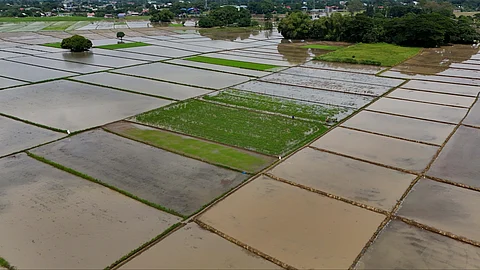
- NEWS
- the EDIT
- COMMENTARY
- BUSINESS
- LIFE
- SHOW
- ACTION
- GLOBAL GOALS
- SNAPS
- DYARYO TIRADA
- MORE

Farm gate prices of palay have begun to inch up in several key rice-producing regions just a week after President Ferdinand Marcos Jr. announced a two-month suspension of rice importation starting 1 September, latest National Food Authority (NFA) data showed.
Department of Agriculture (DA) Secretary Francisco Tiu Laurel Jr. said the government is monitoring how the market reacts to the impending import pause, which was ordered following reports that some farmers were selling palay at just P8 per kilo – far below the estimated P12 per kilo production cost.
“We are watching the market’s response to the rice import suspension very closely,” Secretary Tiu Laurel said.
“If palay prices remain low during the ban, we may consider extending it, or recommend that President Marcos increase tariffs. And if prices of palay rise, we could shorten the ban.”
Global rice prices have softened this year after India lifted its export ban on non-basmati rice last September, combined with bumper harvests in exporting countries, weaker importer demand, and lower tariffs. These factors have driven up imports from Vietnam and other suppliers.
In April and May alone, the Philippines imported 970,000 metric tons of rice – equivalent to nearly three months’ consumption – even as local palay harvests reached a record 9.08 million metric tons in the first half of 2025. DA is targeting an all-time high output of 20.46 million tons for the year.
NFA Administrator Larry Lacson welcomed the uptick in farm gate prices, saying the temporary import halt is designed to give farmers breathing room.
“The objective of the import ban is to allow the price of palay to a level that will give the farmers income, and the steady rise of palay price is a relief. We just hope that the other players in the industry will do their share by not taking advantage by spreading speculations,” Lacson said.
NFA monitoring showed dry palay buying prices have increased by 0.3 to 2.6 percent since late July in Central Luzon – including Nueva Ecija, the country’s rice granary – along with Bicol, Central Visayas, and parts of Mindanao.
Average prices ranged from P16.98 per kilo in Central Luzon to P20.59 in Southern Mindanao, while holding steady at P16.52 in Southern Tagalog and P17.60 in Western Visayas.
However, prices fell in Ilocos, Cagayan Valley, Eastern Visayas, Northern Mindanao, and BARMM, with the lowest at P14.43 per kilo in Cagayan Valley and the highest at P21.67 in BARMM.
